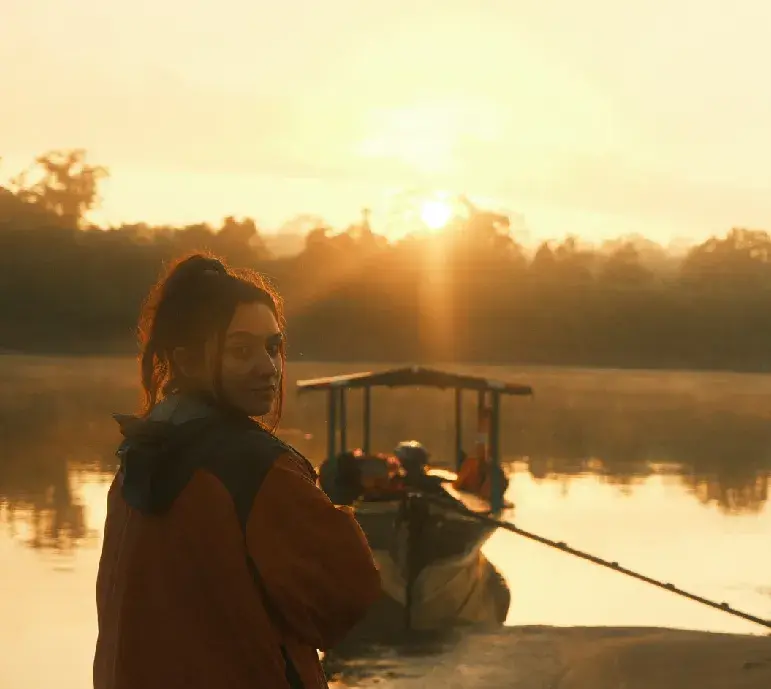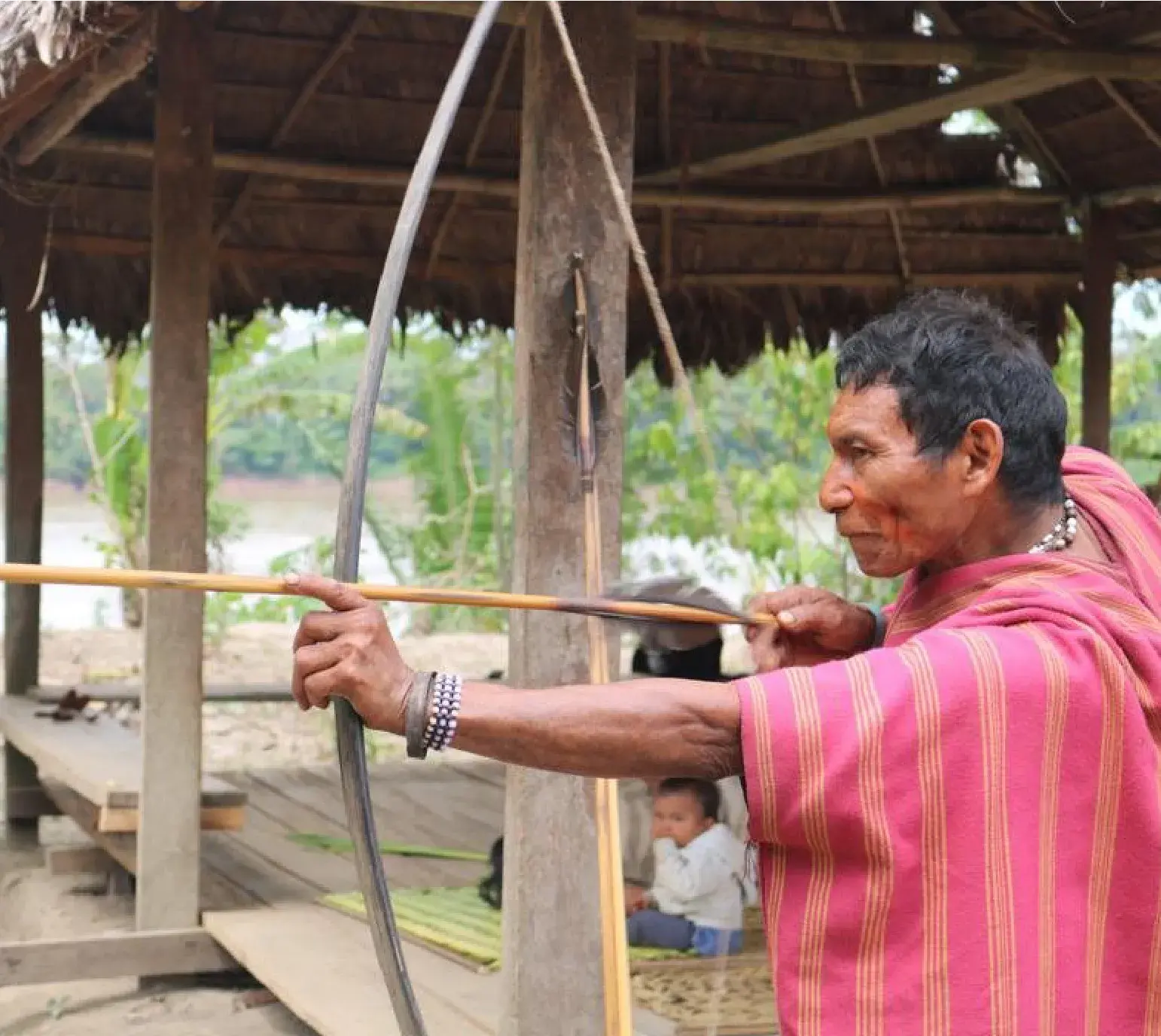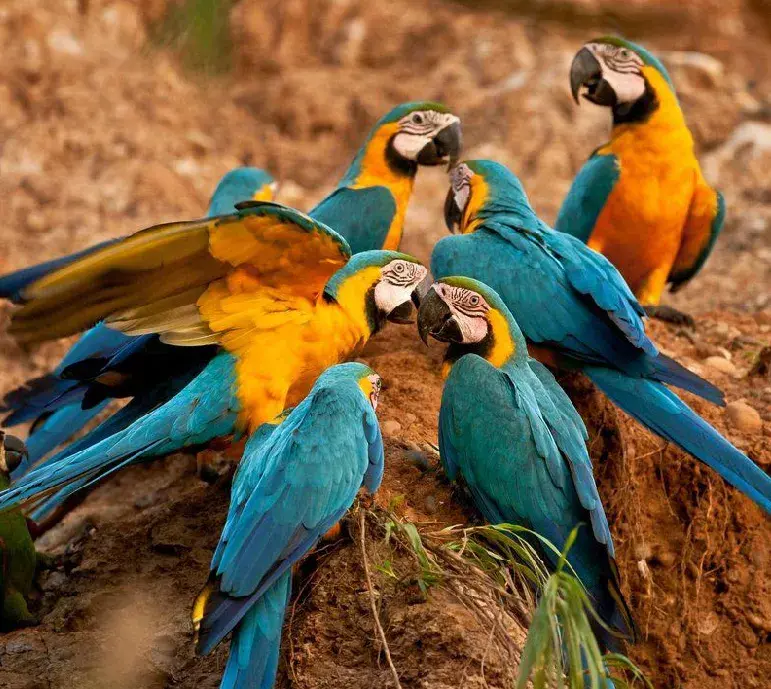Capybara Safari: Giant Rodents by the Tambopata River.
The Amazon Rainforest is a living canvas of extraordinary wildlife, and among its most captivating inhabitants is the Capybara (Hydrochoerus hydrochaeris). As the world’s largest rodent, the Capybara stands as one of the must-see species in the heart of the Amazon, particularly within the lush landscapes of Tambopata National Reserve. In this article, we’ll explore the fascinating world of these gentle giants and why they should be on your Amazon bucket list.

Why the Capybara is the Star of Tambopata
Capybaras are semi-aquatic mammals, perfectly adapted to the riverine ecosystems of South America. Their presence is especially prominent in areas teeming with water bodies like rivers, ponds, and swamps, making the Tambopata National Reserve their ideal sanctuary. Here’s why these creatures are such a remarkable part of the Amazon experience:
A Closer Look at the Capybara’s Physical Characteristics
- Size That Stands Out: Capybaras are giants among rodents, with some reaching up to 4 feet in length and weighing up to 150 pounds. Their impressive size sets them apart in the animal kingdom and makes them easy to spot in their natural habitat.
- Unique Appearance: Their barrel-shaped bodies, covered in dense, reddish-brown fur, and small heads with eyes and ears positioned on top, are perfect for semi-aquatic living. These adaptations allow them to navigate the waters of the Amazon with ease.
- Aquatic Adaptations: Capybaras have partially webbed feet, making them excellent swimmers. Their ability to swiftly move through water helps them escape predators and explore the rivers and swamps of Tambopata.
Social Behavior
Capybaras are known for their social nature, often forming groups of 10 to 20 individuals, sometimes more. These social structures are led by an alpha male and are a testament to their highly cooperative behavior. Observing their social interactions in the wild, especially in the dense jungle of Tambopata, is a highlight of any visit.
The Capybara Diet: Nature’s Lawn Mowers
These herbivores have a diet that consists mainly of aquatic plants, grasses, and fruits. Their continuous grazing not only sustains them but also plays a crucial role in maintaining the health of the Amazon’s aquatic vegetation. As they forage, they help control plant growth and contribute to the overall balance of the ecosystem.
Conservation Status:
Why Responsible Tourism Matters
While the International Union for Conservation of Nature (IUCN) classifies Capybaras as “Least Concern,” it is essential to practice responsible tourism when visiting their natural habitats. Sustainable tourism practices help ensure that these animals continue to thrive in the wild, allowing future generations to witness their beauty.

The Best Spots to See Capybaras in Tambopata
The Tambopata National Reserve is a haven for wildlife, and Capybaras are one of its most enchanting residents. Here’s how you can increase your chances of encountering them:
- Guided Eco-Tours: Partner with ethical and eco-friendly tour operators who offer guided tours in Tambopata. Expert naturalists lead these tours, taking you to prime Capybara habitats while providing in-depth knowledge about their behaviors and the surrounding ecosystem.
- Strategic Wildlife Viewing Platforms: Several platforms within the reserve are strategically placed near water bodies, offering an unobstructed view of Capybaras in their element. Here, you can quietly observe them as they swim, graze, and interact within their groups.
- Exciting Night Excursions: Capybaras are often more active during the evening hours. Night excursions offer a unique opportunity to witness their nocturnal habits and enjoy a different perspective of Amazonian wildlife.
Regarding this, there is something we have noticed…
The Tambopata region of Peru is a veritable paradise for capybara enthusiasts, as evidenced by the extensive iNaturalist data. With over 312 observations recorded by 224 observers only in Madre de Dios region, your chances of encountering these charismatic megarodents are exceptionally high. The map reveals a dense concentration of sightings along the Tambopata River and within the Tambopata National Reserve, making our eco-tours a sure bet for wildlife lovers.
Unparalleled Capybara Viewing Opportunities.
Our strategic location puts you at the heart of capybara activity. The iNaturalist map showcases numerous blue markers, each representing a confirmed capybara sighting, clustered around key areas of the Tambopata region. This visual proof of abundant capybara populations ensures that your wildlife expedition with us will be filled with close encounters and photo opportunities of these fascinating creatures. Whether you’re an amateur naturalist or a seasoned wildlife photographer, our guided tours tap into this wealth of local knowledge to provide you with an unforgettable Amazon experience.
Ready to Experience the Capybara Magic?
Seeing a Capybara in its natural habitat is more than just a wildlife encounter—it’s a connection with the very essence of the Amazon. To embark on an unforgettable journey through the Tambopata National Reserve and witness these incredible creatures up close, book your eco-friendly and sustainable tour with us today. Your visit supports vital conservation efforts that protect the rich biodiversity of the Amazon.
Written by: Armando Vega L.

Book Your Capybara Encounter Now and Embrace the Wonders of Nature!
Nestled along the lush riverbanks of the Tambopata National Reserve, the capybara—the world’s largest rodent—offers visitors a unique glimpse into Amazon wildlife. At Tronco Tambopata, our “Capybara Safari” takes you to the heart of its natural habitat, where you’ll observe these sociable animals in groups, lounging and swimming in the waters of the rainforest.
During your expedition, guides will lead you to vantage points near rivers and oxbow lakes, giving you the best chance to witness capybaras interacting with their environment—often in the company of tropical birdlife and other riverine fauna.
Plan your journey to Tambopata, where the Capybara awaits to enchant you with its gentle charm and the lush Amazon rainforest unfolds its secrets before your eyes.
Frequently asked questions about Capybara Safari
It’s a guided ecological tour into the rainforest section of the Tambopata National Reserve in Peru, where you’ll have high chances of observing wild Capybara groups in their natural habitat along rivers and wetlands.
Capybaras are the world’s largest rodent species, with some reaching up to around 4 feet in length and weighing up to 150 pounds. Their semi-aquatic nature, unique appearance and group social behavior make them a distinctive and memorable part of the Amazon wildlife experience in Tambopata.
You’re most likely to see them near rivers, ponds and swampy areas of the rainforest, where their semi-aquatic adaptations (webbed feet, floating ability) make them comfortable. Guided eco-tours take you to strategic observation points near water bodies where capybaras gather.
Capybaras often live in groups of 10–20 or more, typically led by an alpha male. On the safari you may observe them grazing, swimming, interacting socially, or resting by the water bank — offering strong photo-opportunities and wildlife-education moments.
While the Capybara is listed by the International Union for Conservation of Nature (IUCN) as “Least Concern”, responsible tourism is still important. Conservation-minded practices ensure their habitats are preserved, and your tour supports sustainable wildlife observation rather than disturbance.
Bring binoculars, a good camera, waterproof footwear (since areas are near water), insect repellent, and expect to approach quietly along the riverbank. Also wear comfortable clothing suited to rainforest and possibly muddy conditions. The guide will lead you to the correct spots. (Based on general tour-prep info for the area)
It fits into a broader wildlife-experience program: beyond capybaras you’ll have chances to see monkeys, birds, river mammals and more in the Tambopata region. The safari is a focused highlight but integrates with multi-day tours of the rainforest lodge and reserve.




